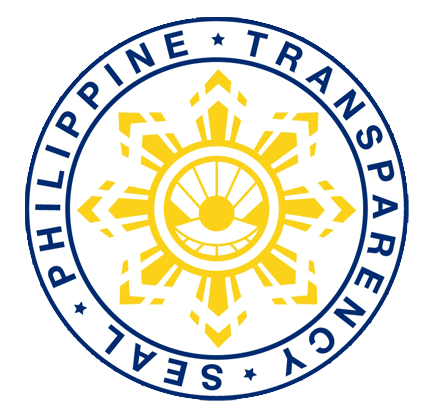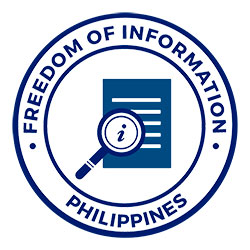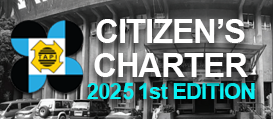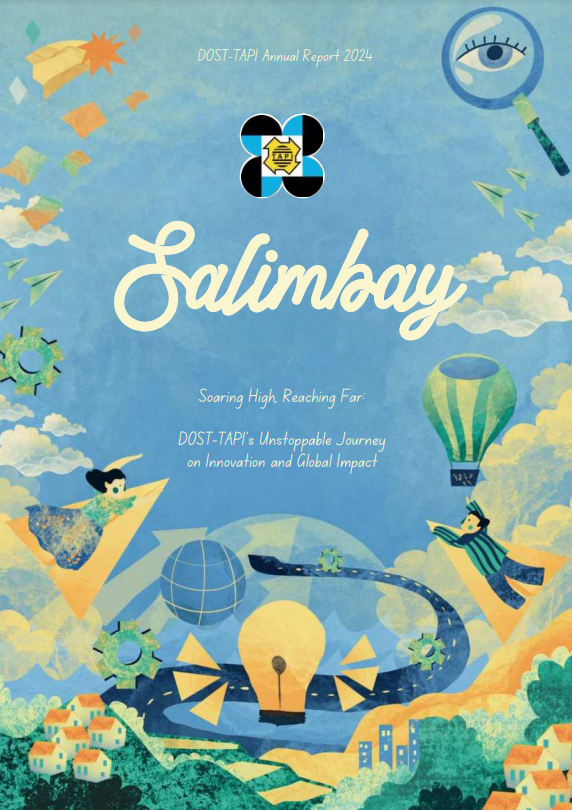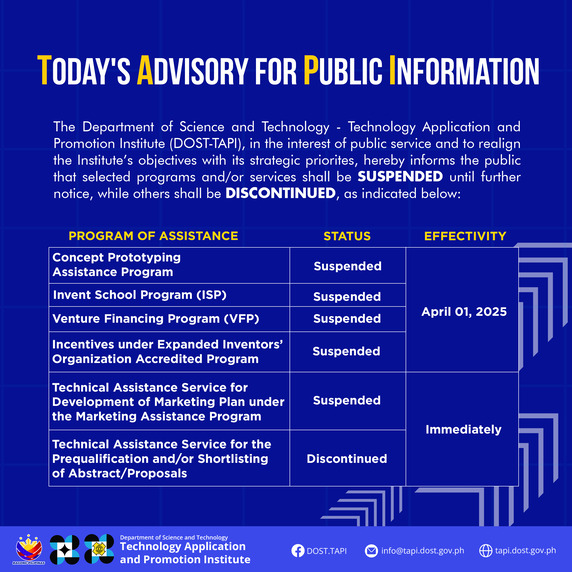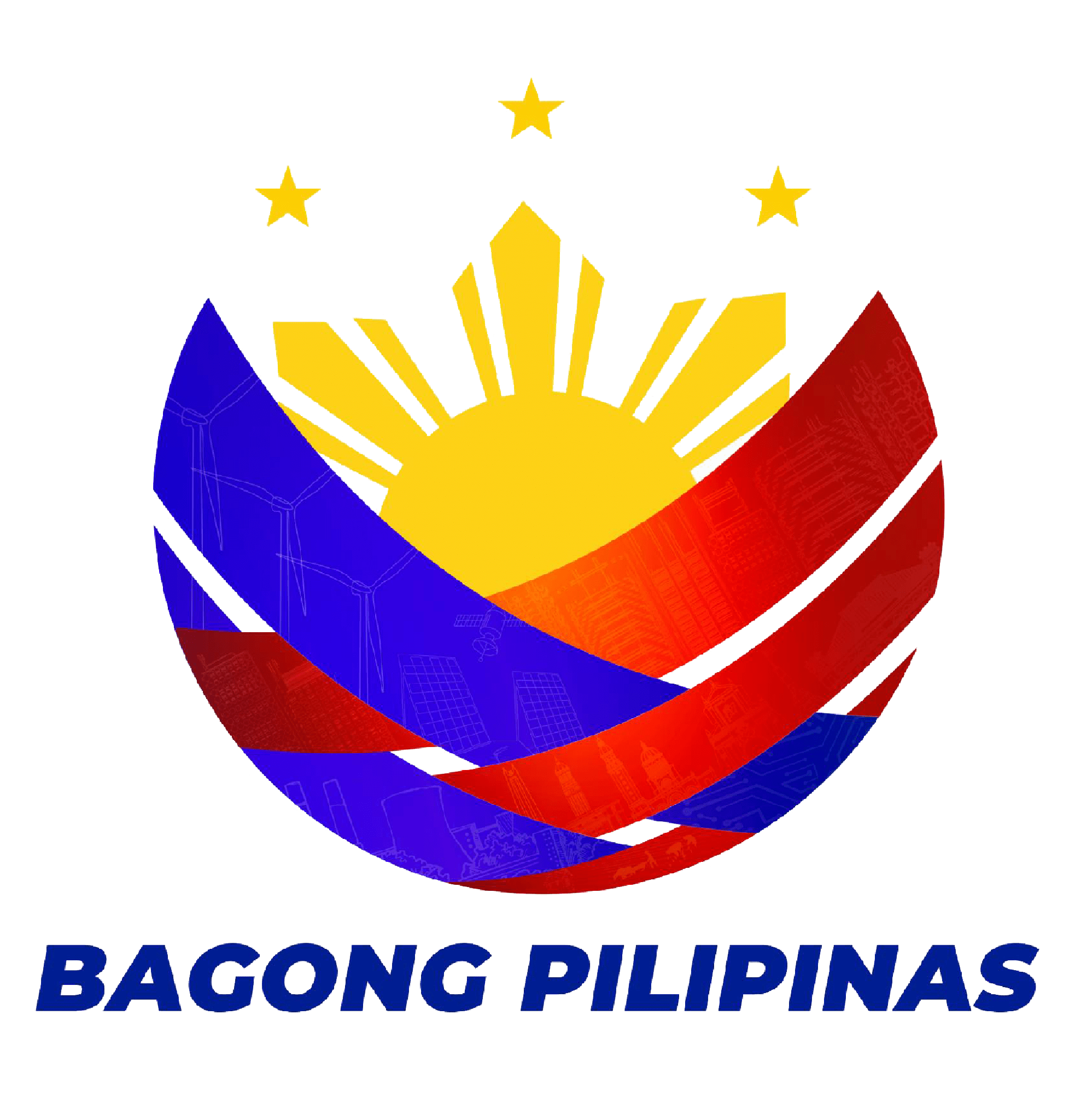Technology Innovation for Commercialization (TECHNiCOM)
|
Opportunity Status: |
CLOSED |
|
Funders: |
Technology Application and Promotion Institute (DOST-TAPI) |
|
Co-Funders: |
N/A |
|
Funding type: |
Grant |
|
Closing date: |
Closed |
|
Attendance to the DOST-TAPI Proposal Enhancement Writeshop is required before submitting your proposal. See available schedules and register here. The submission link will be provided during the Proposal Enhancement Writeshop. For more information, check out the details below. |
|
Link to Documents: |
Program guidelines,attachments and other sample documents can be downloaded here. |
|
Description: |
The Technology Innovation for Commercialization Program (TECHNiCOM) aims to fast-track the transfer, utilization, and commercialization of R&D outputs to contribute to the country’s sustainable development through relevant technological platforms. Through TECHNiCOM, we provide technopreneurs with an easily accessible multimillion pre-commercialization grant and linkage to DOST-TAPI’s technology and innovation support programs. |
The Program shall provide priority funding to pre-commercialization activities of projects aligned to national S&T priorities and project proposal’s strategic relevance to national development, based on the priority areas of the DOST’s Harmonized National R&D Agenda (HNRDA) for 2022-2028. Some of these areas are the following:
PRIORITY SECTORS
- Smart Electronics
Scope: Devices and components, including IoT devices, wearables, and home automation systems.
- IoT and Automation in Industrial Settings
Scope: Industrial equipment with software integration.
- Robotics/Mechatronics
Scope: Robotic systems, mechatronic devices, and other intelligent machines/devices
- Transport System Technologies
Scope: Vehicle electrification, autonomous vehicles, smart traffic management solutions with AI / predictive analytics, and sustainable transportation infrastructure
- Water Resource Management Technologies
Scope: Water treatment systems, desalination technologies, wastewater treatment and/or recycling solutions, and smart irrigation systems
- Renewable / Sustainable Energy Solutions
Scope: Renewable energy technologies, energy storage systems, energy efficiency solutions, and grid integration technologies
- Nutraceuticals and Halal Technologies
Scope: Innovative processing/packaging solutions and processed products derived from food sources packaged with high health benefits and nutritional value, and Halal-related technologies
- New Farming Technologies
Scope: Precision agriculture mechanization, emerging farming systems (hydroponic/aeroponic solutions), remote sensing technologies, mechanization technologies, digital farming solutions, and integrated agricultural management systems
- Advanced Materials Technologies
Scope: Nano/micro-structured technologies, smart materials, and other materials science innovations
- Disaster Risk Reduction, Climate Change Adaption and Mitigation Technologies
Scope: Early warning systems, resilient infrastructure solutions, disaster response technologies, climate change adaptation and mitigation, and technologies for community resilience
- Green, Clean and Biotech Innovations
Scope: Bamboo-related technologies, biotechnology innovations, and clean, green and/or circular-economy technologies
Eligible proponents for this Program are the following:
- Research and Development Institutes (RDIs)
- State Universities and Colleges (SUCs)
- Private Higher Education Institutions (HEIs)
- Startup Companies/firms
- Spin-offs
- Cooperatives
For RDIs, SUCs, and HEIs, please take note of the following important eligibility requirements:
- The previous R&D must be funded by any of the following:
- The proponent institute itself
- DOST Regional Offices (ROs)
- DOST Research and Development Institutes (RDIs)
- DOST Service Institutes
- DOST Collegial Bodies
- Non-DOST organizations (e.g., NGOs, other government agencies, etc.)
- The previous R&D must be funded by any of the following:
- The previous R&D must not be funded, managed, or monitored by any of the DOST Sectoral Councils
For startup companies/firms, please take note of the following important eligibility requirements:
- Must be in operation for at least one (1) year and less than seven (7) years.
- Startups registered as Corporations and those with DTI, SEC, and CDA registrations are eligible.
Proponents with previous DOST-TAPI funding must fully liquidate their previous DOST-TAPI funding to be eligible for the Program.
COVERAGE
The Program provides grants for projects involving substantial technology refinement activities. The covered pre-commercialization activities include but are not limited to:
- Commercial prototyping
- Pilot-scale or scaled-up testing
- Technology validation
- Market research
- Field or market testing
- Business model validations
- Pre-investment and other analogous activities
TECHNOLOGY DEVELOPMENT STAGE
The technology must be at a Technology Readiness Level (TRL) 5–basic technological components are integrated and field-tested to its intended users. At least an improved prototype is available and an application of the technology is identified.
TECHNOLOGY ELIGIBILITY
The following are important pointers for technologies to be funded:
- The proponent must own the subject matter technology being proposed.
- Proponents that have not funded the R&D of the technology must provide documentary proof stating any one of the following:
- The proponent has ownership of the technology
- An agreement allowing the proponent to further develop the existing technology, and keep ownership of any and all technologies developed through project implementation. This is only applicable to spinoff companies*
Examples of documentary proof of ownership or license to use for further R&D include licensing agreement, funding agreement, IP filing, etc.
NOTE: Ownership of the technology will be based on the funding provided during its R&D phase. The following provide illustrations for clarity:
- Undergraduate or capstone research conducted by the students that have not received direct funding from the SUC or HEI is not owned by the university
- Spinoff companies must secure a licensing agreement from the SUC/HEI/RDI to be eligible.
- Startup companies must own their technology or must be assigned ownership of the technology. Otherwise, the startup is ineligible.
EXCLUSIONS
The Program does not cover the following activities:
- Food formulation unless a functional food product designed for a specific health-related problem or industry solution
- Purely establishment of facilities
- Discovery, development of new products, the establishment of proof of concept, and basic research
- Technologies for extension purposes and not commercialization (e.g., farming/breeding techniques, management protocols, etc.)
- Technologies without previously conducted and documented R&D output
- Technologies ready for commercialization/market entry (request is geared for commercial production/manufacturing and expansion)
NOTE: To be qualified under the Program and to ensure safety and effectiveness, for pharmaceuticals the technology must be at TRL 7 (completed at least Phase II trials). For medical devices, the technology must be at TRL 6.
FINANCIAL ASSISTANCE
Financial assistance covers direct and indirect costs including personnel services (PS), maintenance and other operating expenses (MOOE), and equipment outlay (EO). Budget details must be reflected in the Line-Item Budget (LIB), pursuant to the DOST-GIA guidelines.
A counterpart fund, in kind and/or in cash, of at least 15% for government and 20% for private entities shall be required as one of the application requirements. It is preferable that outside/other funding support to complement the TECHNiCOM funds is also obtained.
* Spinoff companies are legal entities that emerge as a result of commercializing a technology that is originally developed within an existing SUC/ HEI/ RDI. The technology generator must still be actively involved in the operations of the spinoff company.
The Technology Readiness Level (TRL) is a tool to assess the technology development stage for a particular application. A particular level is achieved if the prescribed activities for that level are accomplished. The movement of technology through the scale tracks the technology development stage (whether it’s an idea, proof of concept, component, system, etc.) and the environment where it is tested (laboratory, a simulated operational environment, actual environment, etc.).
TRL 1 | Basic Principles
Qualifying questions:
- Is the research basic and experimental without a specific application?
- Is the research purpose to validate a fundamental theory or scientific principle?
Indicators:
- Basic research
- Ideation
- Describe the need for technology
- Paper studies
TRL 2 | Technology Formulation
Qualifying questions:
- Was a technology created, a technique established, or a formulation developed?
- Was the concept proven through the research?
- Were laboratory tests done to confirm that the technology works?
Indicators:
- Concept development
- Invention
- Analytical studies
TRL 3 | Proof of Concept
Qualifying questions:
- Was there a specific application of the technology established?
- Was the technology tested for that specific application in a laboratory environment?
Indicators:
- Initial lab testing
- Critical function demo
- More parameters
- Separate elements
- Application identified
TRL 4 | Rough Prototype
Qualifying questions:
- Was there a prototype built?
- Are there products developed?
Indicators:
- Bench-scale testing
- Component integration
- “ad hoc” hardware/combination
- Low-fi prototype
TRL 5 | Improved Prototype
Qualifying questions:
- Was the prototype improved from its earlier design?
- Was the prototype used by intended users or field-tested for the purpose of improving its features/usability?
- Was the prototype tested and redesigned to fit the needs of intended users?
Indicators:
- Relevant environment testing
- Rigorous lab testing
- Integration of realistic elements
- High-fi prototype
TRL 6 | Open Water
Qualifying questions:
- Was the prototype manufactured close to the actual intended environment?
- Was the technology operating in an environment at a pre-commercial scale?
Indicators:
- Design freeze
- Fully-functional prototype
- Testing in a high-fi setting
TRL 7 | Operational Demonstration
Qualifying questions:
- Was the technology manufactured at close to commercial scale?
- Can the technology be used, replicated, and demonstrated, meeting consistently quality or performance standards?
Indicators:
- Prototype near / at final form
- Field testing
- Demonstration at pre-comm scale
TRL 8 | Actual Technology Demonstration
Qualifying questions:
- Are all the manufacturing issues resolved at a pre-commercial or commercial scale?
- Does the technology meet quality and performance standards?
Indicators:
- Demonstration of the final form
- Technology validation to meet rqts
- Manufacturing issues solved
TRL 9 | Actual Technology Deployment
Qualifying questions:
- Is the technology replicable at consistent quality and at a commercial scale?
- Is the technology acceptable to customers?
- Are customers already paying for the technology/product?
Indicators:
- Fully commercial
- Production fully operational
- Full-scale deployment
- Available to costumers
The Investment Readiness Level (IRL) is a tool to measure the progress on the state of things as far as developing a business from technology.
IRL 1 | First Pass Business Model
IRL 2 | Market Size/Competitive Analysis
IRL 3 | Problem-Solution fit
IRL 4 | Low Fidelity Prototype
IRL 5 | Validate Product-Market Fit
IRL 6 | Validated Revenue Model
IRL 7 | High Fidelity Prototype
IRL 8 | Validate Value Delivery
IRL 9 | Validate Metrics that Matter
APPLICATION STEPS
1.The project proponent will need to submit complete requirements to proposals2025@tapi.dost.gov.ph. DOST-TAPI will evaluate the completeness of the submission of the proponent and shall endorse his/her project if so.
-
- The proponent may attend a writeshop session depending on where DOST-TAPI’s writeshops will be held for this year.
2. The project proponent with approved abstracts will prepare the full-blown proposal including all the documentary requirements. The proponent must send a request to the DOST Regional Office for a positive endorsement based on the initial evaluation of the project TRL.
-
- Please allow the DOST Regional Office two (2) weeks to issue an endorsement. The proponent should ideally request the endorsement well ahead of the Call for Proposals deadline.
- The full-blown proposal and the line-item budget to be submitted via DPMIS will need to be filled out manually on the platform. Accomplished Word document for the full-blown proposal and Excel document for the line-item budget may be uploaded as attachments on the DPMIS.
- The proponent’s project location will follow the respective DOST Regional Office. (e.g., if the proponent is located in Metro Manila; DOST-NCR is the appropriate DOST Regional Office).
3. Once the proponent has finalized the proposal and completed all the requirements, including the DOST Regional Office endorsement, the proponent submits these via the DOST Project Management Information System (DPMIS)
-
- The DPMIS shall close after the indicated Call for Proposals deadline. The evaluation period shall begin after the Call for Proposals deadline. Only proposals submitted successfully via the DPMIS will undergo official evaluation
4. The DPMIS shall forward the submitted proposals to DOST-TAPI's Records Section at info@tapi.dost.gov.ph.
The application processing officially begins once the proposal submission is forwarded to or received by DOST-TAPI's Records Section.
5. DOST-TAPI shall inform the project proponent, through the contact information provided, regarding the status of his/her proposal. The proponent is expected to closely coordinate with the TECHNiCOM Program Unit for possible revisions and the next evaluation steps.
INELIGIBLE PROPOSALS
The following will automatically be disapproved:
- Proposals with TRL 1-3 and 8-9
- Proposals with incomplete requirements
- Proposals from ineligible proponents
- Proposals outside the priority areas of the Program
- Proposals submitted to any other call route or Council/s
- Proposals not submitted through the DPMIS
- Proposals from startups that are not yet SEC-registered or startups existing for more than 7 years
- Proposals in the proof of concept or idea stage
- Proposals whose activities are not covered by the Program
- Capsule proposals
- Proposals in the commercialization stage
- Startups that are operating less than one (1) year
PROJECT PROPOSAL FORMS
The project proposal forms and other relevant documents are accessible at this link.
NOTE: the full-blown proposal and the line-item budget to be submitted via DPMIS will need to be filled out manually on the platform. Accomplished Word document for the full-blown proposal and Excel document for the line-item budget may be uploaded as attachments on the DPMIS.
*The appropriate DOST Regional Office covers the proponent's area (e.g., if the proponent is located in Metro Manila the DOST-NCR is the appropriate DOST Regional Office).
All eligible proponents must comply with the following requirements to be submitted via http://dpmis.dost.gov.ph before the Call for Proposals deadline:
- General Documentary Requirements
- One (1) original and/or scanned copy of Proponent’s letter request to avail the financial assistance addressed to the TAPI Director;
- One (1) original and/or scanned copy of Endorsement Letter from Proponent’s Agency Head;
- One (1) original and/or scanned copy of Endorsement Letter from concerned DOST Regional Office or DOST Sectoral Council, if applicable. The appropriate DOST Agency can either be:
- DOST Regional Office* - for SUCs, HEIs, & RDIs; Startups without previous DOST Sectoral Council funding
- DOST Sectoral Council - for Startups with previous DOST Sectoral Council funding
- One (1) original and/or scanned copy of Full-blown proposal in accordance with the TECHNiCOM Format, including the necessary supporting documents;
- One (1) original and/or scanned copy of Line-Item Budget (DOST Form No. 4);
- One (1) original and/or scanned copy of Work Plan of the Project / Gantt Chart (DOST Form No. 5);
- One (1) original and/or scanned copy of Monthly Cash Program;
- One (1) original and/or scanned copy of Gender and Development Score Sheet.
- Original and/or scanned copy of Letters of Interest from Cooperating Agencies to participate in the project as collaborator or adopter of the technology; and
- One (1) original and/or scanned copy of Curriculum Vitae of the Project Leader and Project Management Team.
- General Documentary Requirements
-
- Additional Requirements for Startups:
- One (1) set of business registration and compliance documents comprising of:
- One (1) original and/or scanned copy of registration at either DTI, CDA or SEC (whichever is applicable);
- One (1) original and/or scanned copy of Authenticated Articles of Incorporation / Cooperation when applicable; and
- One (1) original and/or scanned copy of the Mayor's / Business permit where the business is located.
- One (1) original and/or scanned copy of Latest Audited Financial Statements and Latest Income Tax Returns;
- One (1) original and/or scanned copy of Board Resolution indicating the authorized person to transact and sign documents for SEC registered entities;
- One (1) Affidavit reflecting the following; (1) Authenticity (stating all documents submitted are valid and not falsified), (2) Disclosure of Other Business, and (3) Sworn Affidavit that all of the start-up owners/ incorporators/ stockholders/ organizers/ partners, directors and/ or officers are not agents of or related by consanguinity or affinity up to the fourth civil degree to any DOST officer authorized to process and/or approve the grant and release of funds; and
- One (1) original and/or scanned copy of Endorsement Letter from the business incubation facility where the start-up is incubated, if applicable.
- One (1) set of business registration and compliance documents comprising of:
- Additional Requirements for Startups:
Forms and requirements can be found at this link.
NOTE: the full-blown proposal and the line-item budget to be submitted via DPMIS will need to be filled out manually on the platform. Accomplished Word document for the full-blown proposal and Excel document for the line-item budget may be uploaded as attachments on the DPMIS.
*The appropriate DOST Regional Office covers the proponent's area (e.g., if the proponent is located in Metro Manila the DOST-NCR is the appropriate DOST Regional Office).
The project proposal shall be evaluated based on the Program’s project proposal review mechanism, specific review criteria, or based on the following:
Workability/ Technical Viability
-
- Technical soundness of the technology based on existing scientific and technological principles
- Maturity of the technology
- Advanced features of the technology over existing product or process with the same functions and/or contribution to the advancement of S&T
Social and Environmental Impacts
-
- Employment generation from the technology
- No potentially irreversible immediate and long-term hazards/ consequences on the environment as well as in health and safety
Commercial Viability
-
- Competitiveness of the technology over existing product or process in the market
- Market potential of the technology
Management Capability
-
- Technical and managerial capacity of the proponent demonstrates a competent and experienced leadership
- Availability of competent and reliable workforce and facilities
- Manageable timeframe
There is no funding cap on proposals.
For proposals with a total project cost < ₱5 million, the DOST-TAPI Executive Committee (EXECOM) shall deliberate and approve.
For proposals with a total project cost ≥ ₱5 million, the TECHNiCOM Program Advisory Committee (PAC) shall deliberate and approve.
Projects will have a duration of one (1) year.
For general inquiries about TECHNiCOM, please contact:
DOST-TAPI Public Assistance
Office Email: info@tapi.dost.gov.ph
Tel. No.: 8582-1450 local 2171

